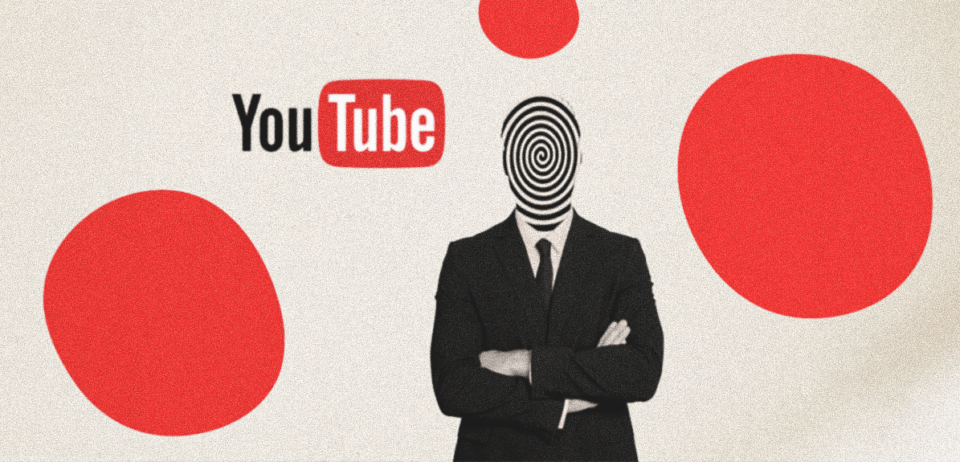
How YouTube’s Deepfake Detection Tool is Transforming Brand Safety
For advertisers and marketers, deepfake videos are an alarming concern —as brands invest a lot to maintain their brand image and a manipulative video like this can cause irreparable damage in minutes to them. The same goes for influencers and creators who might unknowingly find themselves featured in false endorsements or scandalous content.
To combat this growing threat, YouTube is stepping up with a deepfake detection tool, promising to provide much-needed security to brands, advertisers, and content creators. But what does this tool really mean for brand safety, and how does it work? Let’s explore.
YouTube secret weapon to create safe environment for influencers, creators and advertisers
YouTube, the world’s largest video-sharing platform, has recognized the dangers posed by deepfakes. In response, it’s developing a deepfake detection tool, set to launch next year. However, this tool will not work automatically on all content. It will only activate when a user reports potentially fake content, ensuring that flagged videos can be examined for AI-generated manipulations. This is a user-driven approach, not automatic surveillance.
This isn’t just a simple tool update—it’s a strategic move to establish a safer space for creators, advertisers, and viewers alike. YouTube is uniquely positioned to take the lead in the battle against deepfake content, given its massive reach and impact. With this new tool, the platform aims to help users feel confident in the authenticity of the content they encounter, reducing the risks of false information spreading and offering a safeguard for brand safety.
However, it’s crucial to remember that the tool’s functionality will only kick in when flagged by users, rather than automatically reviewing all content. So, how does this tool actually work? It’s powered by advanced machine learning algorithms that identify subtle inconsistencies that might not be visible to the human eye. YouTube is working on two separate deepfake-detection tools but has yet to share a release date. Here’s a breakdown of the tools:
1: Singing Voice Detection Tool: Integrated into YouTube’s Content ID, this tool helps identify AI-generated songs using artists’ voices, aiming to protect musicians from unauthorized AI impersonations.
2: Face Impersonation Detection Tool: Targets public figures, helping them track AI-generated videos featuring their likeness. This tool allows individuals to flag and remove deepfakes impersonating their faces but does not proactively scan for less-known figures.
While no detection system is perfect, this tool marks a big step forward in protecting brand safety and building user trust.
Why this matters for brands and advertisers?
So, what does YouTube’s new tool mean for brands and advertisers in the real world? For starters, it means peace of mind. Knowing that the platform is actively working to detect and neutralize deepfake threats allows brands to focus on creating and sharing content without the constant worry of misrepresentation. With a robust detection system in place, viewer trust in the authenticity of the content is enhanced, boosting confidence and encouraging greater engagement on the platform.
This added layer of protection also safeguards influencer partnerships, giving brands assurance that their investments are secure and influencers the comfort of knowing their likeness won’t be misused. The tool helps maintain the integrity of partnerships, preventing situations where influencers might be falsely represented in controversial or misleading content.
Moreover, preventing the spread of false content helps brands avoid costly damage control and reputational repair. On a larger scale, YouTube’s proactive approach could inspire other social media platforms to adopt similar measures, setting a new standard for digital content verification and fostering a safer online environment for everyone.
What’s next for deepfake detection and brand safety?
While YouTube’s tool is a significant leap forward, the race to improve detection continues. Deepfake technology is constantly evolving, and as deepfake creators come up with new methods, the tools will need to adapt accordingly. There’s also an ethical component—as YouTube’s tool evolves, potential issues like false positives and privacy concerns need to be managed, and transparency around how the system works will be crucial.
Moreover, there are ethical considerations. As platforms like YouTube introduce increasingly sophisticated detection tools, concerns about privacy and the possibility of false positives arise. For example, what happens if a legitimate video is flagged by mistake? Transparency in how the detection process works will be crucial in maintaining user trust and ensuring fairness.
To complement YouTube’s tool, brands should consider implementing additional measures to protect themselves from deepfake threats. This could include working with third-party verification services or educating teams on the risks posed by deepfakes. Together, these strategies will help brands build a stronger, more resilient defense against digital manipulation.
The introduction of YouTube’s deepfake detection tool marks a significant advancement in the battle for brand safety in the digital world. By proactively tackling deepfake content, YouTube is not only enhancing the credibility of its platform but also setting an example for other content-sharing sites to follow.
For brands, the message is clear: while the fight against deepfakes will continue to be a challenge, new tools and technologies are paving the way for a more secure digital landscape. Staying informed and adaptive will be key in leveraging these advancements for better brand protection and maintaining trust in a rapidly changing media environment.
So, next time you hit play on a YouTube video, rest a little easier knowing that there’s a watchful eye working behind the scenes to ensure what you see is, indeed, real.
Cut to the chase
YouTube’s smart move to introduce a deepfake detection tool is a significant step in protecting brand safety. However, it’s not a perfect solution — as AI continues to advance, identifying inconsistencies in deepfake videos will become increasingly challenging. To stay safe and informed, brands and creators must remain vigilant, adapting to technological advancements and evolving threats as they emerge.


